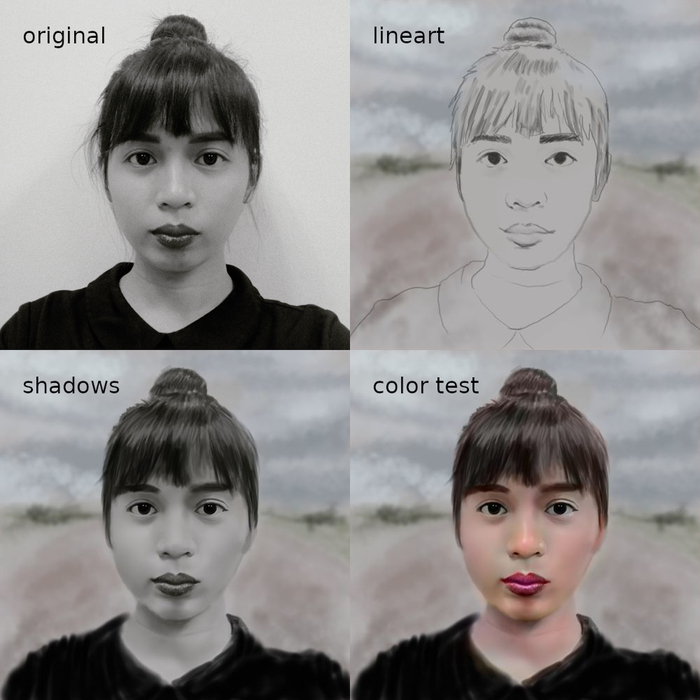A Look At Shadow And Color
Friday • March 25th 2022 • 7:04:41 pm
This exercise still relies on reference images,
positioned over the entire canvas.
But we first create line art,
not exactly necessary, but it takes no effort, and it is very fun.
And then a shadow layer,
which will require colorization.
Follow something like the Marco Bucci's stylization tutorial
and possibly add one or two of Ross Tran's Five Tips.
Any tutorial on semi or high realism,
that deals with shadows that require color glazing.
This simple technique,
touches upon more traditional steps.
It is not as stable as working with photo reference directly,
and may cause getting stuck - like I just did with colors taking to long to finish.
But all the steps in shadow glazing tutorials,
will touch upon most of the concepts in art.
Color glazing is also used in oil painting,
so it is a neat introduction to topics outside of digital painting.
The art challenge presented only a black and white photo,
so it is interesting to try to color it - but there is no way to be sure the colors are correct.
I left the nose an unusual color as I wish to depart from realism,
adding unusual light and possibly an oil painting texture.
Rather than making color more realistic,
I will try to create a new color theme.
If I had to create a realistic skin tone,
I would just use colors of a similar photo.
This is perhaps the best example,
of how art comes with its own teacher.
If you just stretch a reference image over your entire canvas,
create line art based on that, and use it to check if your shadows are correct.
You are slowly, step by step exploring,
a more traditional way of creating art.
It is very hard to get stuck here,
as the reference image is always near by.
So you are always moving forward,
and each step is always fascinating to explore.
What you may not be noticing,
that with each time you paint eyes, or nose, or lips...
You are memorizing their structure,
in a way that is similar to how you navigate a city.
We are all artists.
and art is part heart.
